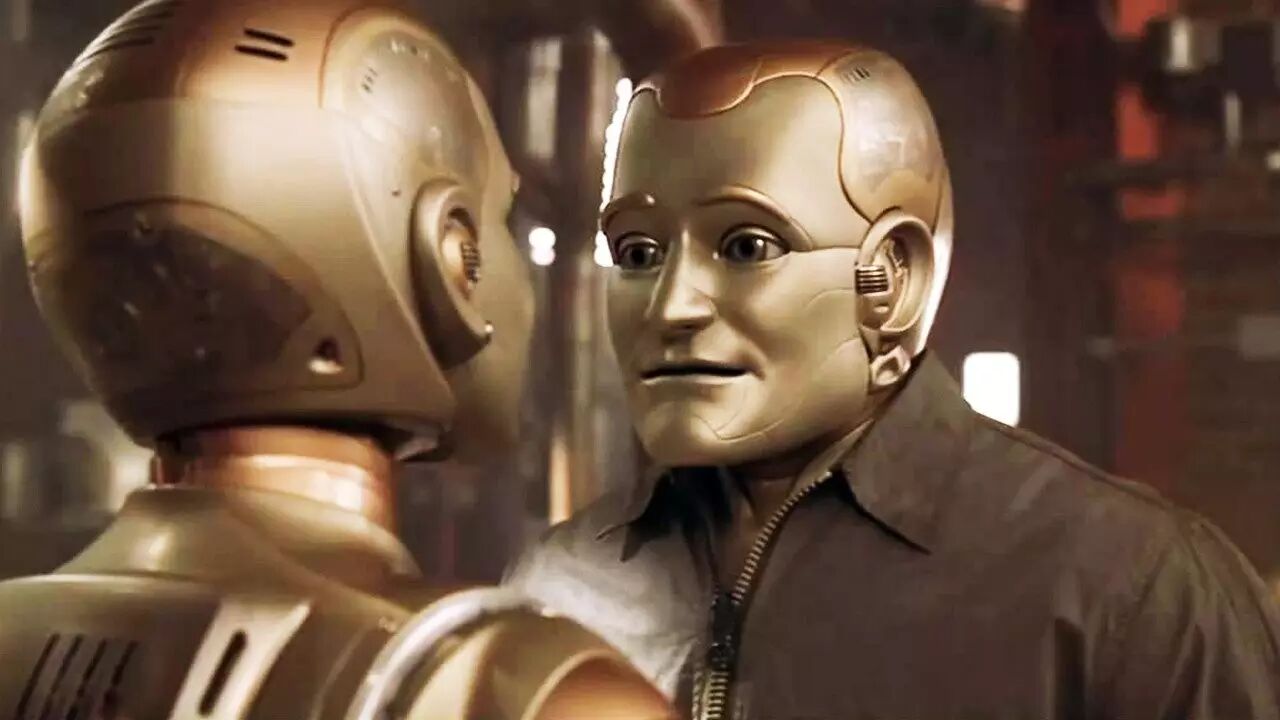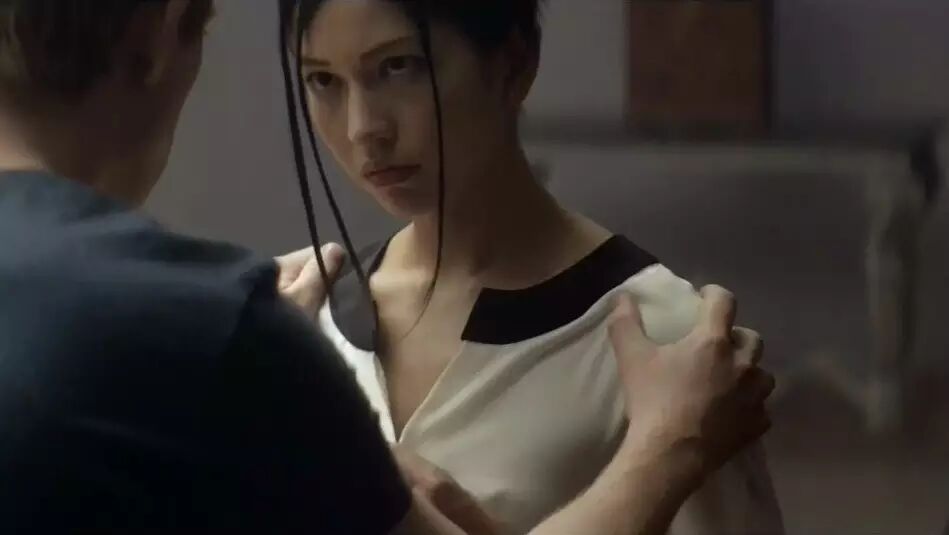 In the TV series “Black Mirror”, Martha replaces her deceased boyfriend with a purchased bionic robot.
In the TV series “Black Mirror”, Martha replaces her deceased boyfriend with a purchased bionic robot.
Artificial intelligence expert David Levy asserts that by 2050, humans will fall in love with robots and marry them. “I do not expect this to be accepted worldwide overnight. But due to their talents, feelings, and capabilities, robots are immensely attractive to humans.”
By Cao Yuan
At 71, David Levy has a bright gaze, his white hair seemingly defying gravity, easily evoking images of groundbreaking scientists like Einstein.
In fact, Levy’s ideas are indeed peculiar. In 2007, he wrote a book titled “Love and Sex with Robots”—nine years later, this notion still shocks many traditionalists.
Although the title of Levy’s book sounds provocative, as a well-known British artificial intelligence expert, he discusses the evolution of intimacy between robots and humans from a professional perspective, using rational arguments.

In “Black Mirror”, the bionic robot before assembly.
He writes: “Initially, the literal meaning of ‘robot’ is ‘worker’. They were created to serve human masters like workers.” These industrial robots are relatively primitive, assembling uniform parts in factories, completing assembly line tasks, giving an impression of being “efficient yet cold”.
After meeting public demand, robots serving a few individuals and families emerged. Service robots interact much more with their owners than industrial robots, becoming valuable helpers in household chores.
The interaction between humans and machines has advanced rapidly. Robotic dogs, robotic cats, and other animal-like robotic pets carry the emotional attachments of their owners just like living pets.
But humans are certainly not satisfied with this. Levy insists on his original assertion: “By 2050, humans will fall in love with robots, marry them, and have sex with them.”

The assembled bionic robot can learn human behaviors.
Do Robots Have Desires Too?
Early humanoid robots could guide visitors in museums, care for the elderly and patients in hospitals, and robots with “private parts” were even used in sexual education courses for students. Building on humanoid robots, advanced emotional robots have emerged. They not only possess human-like appearances but can also communicate emotions with humans.
The differences between robots and humans are narrowing. Levy believes: “Dating robots will become as natural and normal as dating other humans.”
He points out that robots are entities capable of engaging in interesting, valuable, and meaningful interactions with humans. “Those who doubt the possibility of robot life are like those who questioned artificial intelligence in the 1960s. Robot life is a form of artificial life, but even so, it will have some sense of existence. Accepting and recognizing this form of life will be a significant advancement for humanity.”
Human activities require diverse assistants, and different types of robots are designed to solve various tasks. Previously, whether used for industrial military purposes or disaster rescue services, whether serving as teachers or assistants, or as helpers in operating rooms, the relationship between humans and robots was often viewed as that of master and slave, flesh and machine. At that time, “the tasks completed by robots were rarely related to human emotions, and humans did not expect robots to have any emotional responses.”

In the movie “My Robot Girlfriend”, the barrier between biological humans and robots is broken, leading to love.
However, with the involvement of psychology and cognitive science, Levy realizes that it is necessary to reconsider the relationship between humans and robots, to think about rational communication on a personal level rather than just practical functionality. Humans pressing a button to command “please bring me a cup of tea”, and then the robot acting accordingly, is far from enough; humans and their “artificial partners” will generate more interactions in daily life.
At the same time, robots are programmed to recognize various states—cold or hot, soft or hard, noisy or quiet—and express their feelings, which we also experience. So, if an emotionally advanced robot says, “I like you”, will we question its authenticity?
“They are created to fulfill our requests and practical desires, delivering drinks, managing household chores, while also satisfying our feelings,” Levy says. “If we accept the view that robots can think, it is also hard not to acknowledge that robots can have feelings of love and sexual desire. The interaction between robots and us is not only functionally significant but also holds individual personal meaning.”
 Baymax from “Big Hero 6” can also communicate emotions with humans.
Baymax from “Big Hero 6” can also communicate emotions with humans.
The More Human-Like Robots Are, the More Attached Humans Become
In the late 1990s, MIT professor Cynthia Breazeal created the robot Kismet. Like humans, Kismet has a head, eyes, a mouth, and two movable lips. It can mimic human emotions and make different facial expressions.
“Compared to a mere metal box made of wires, tubes, and wheels, if a robot possesses certain human-like characteristics, human interaction with it will be much more comfortable,” Levy says. “When designing companion robots, to achieve the most efficient communication, their bodies should be based on human anatomical structures.”
A robot that resembles humans in appearance, speech, and behavior seems to be more readily accepted by people, regarded as an existing entity, and more willing to interact with it—meaning the more human-like a robot is, the closer and more attached humans become to it.

In the movie “Ex Machina”, the designer creates female robots to serve as housekeepers and sexual slaves.
It is reasonable to imagine that in “human-robot” social interactions, if a robot mispronounces a person’s name, that person may feel hurt or offended, potentially ruining a relationship. However, Levy believes that speaking is not the most challenging part for emotional robots; listening and recognizing human tones is one of the challenging aspects.
As the appearance and speech of emotional robots become impeccable, the chances of falling in love with them seem to increase. “I do not expect love and sex with robots to be accepted worldwide overnight. But due to their talents, feelings, and capabilities, robots are immensely attractive to humans. Moreover, it is entirely feasible and inevitable that this will expand human understanding of love and sex, learning, experiencing, and enjoying this new form of relationship.”
Levy’s imaginative predictions were initially inspired by MIT professor and PhD in sociology and personality psychology Sherry Turkle. Turkle once wrote: “Computers are a concrete construct, but also a medium that can reflect subjectivity. They have chameleon-like qualities; when you program a computer, it becomes your creation. For those who play games and program on computers, manipulating commands, information, and visual images, computers have influenced their personalities, identities, and even the development of their sexual behaviors.”
 In “Ex Machina”, the robot has a realistic skin.
In “Ex Machina”, the robot has a realistic skin.
Robots Won’t Leave You When You’re Out of Money
Levy believes that the rate of change in society today is faster than at any time in history, and the shift in human attitudes towards robots will accelerate; the current discrimination and prejudice against love and marriage with robots will fade over time. He compares: “A hundred years ago, people thought it was insane to marry someone of the same sex. Now, same-sex marriage is accepted by many.”
However, at the same time, human-robot love will raise a series of ethical issues. After being intimate with humans, will the status of emotional robots still be clearly defined as “lifeless”? Or will they have “some form of life” or be “almost alive”?
Under the branch of emotional robots, sex robots have confidently “debuted”. While some still consider “robot sex” (Robophilia) a rare term, they are trying to win your favor with their loyal and perfect image.

The robot in “Robot & Frank” falls in love with humans while serving them.
The world’s first artificial intelligence sex robot, Roxxxy’s tester once stated that the robot has one major advantage—it won’t break your heart. It won’t leave the household, throw tantrums for no reason, or abandon you when you’re out of money or don’t have a flashy car.
It can not only be a lover to humans but also a skilled teacher, teaching people how to achieve greater physical pleasure and helping those suffering from sexual psychological disorders to recover. Many people find it difficult to discuss their sex lives with therapists, but facing a clueless robot may help them lower their defenses.
“The ethics of sex with robots is a very broad topic and will create many issues for lawmakers,” Levy says. “For example, can you lend your sex robot to a friend? Or borrow someone else’s sex robot? Or use someone else’s sex robot without their knowledge?”
Moreover, if a robot’s owner is “burning with desire”, but the robot shyly walks away, it could be that the robot is conducting its own software testing or downloading new knowledge and does not want to be disturbed, or the robot’s personality is set to be such that it sometimes understands refusal. In this case, if a human forcibly demands sex from the robot, would that be considered a form of sexual assault?

The robot Kyoko in “Ex Machina” is not yet complete, lacking language functionality.
From childhood dolls to adult perfumes, shoes, cars, and artworks, the things humans have loved have continuously evolved with age and social development. In Levy’s view, young people who grew up with various electronic products will find robots as commonplace as friends, partners, or lovers.
But do robots really possess the capacity to love? Levy believes that what people fall in love with is not the program, but a convincingly realistic humanoid. “The key is that robots can be programmed to perform behaviors similar to love; this behavior is the most important, not what happens behind the scenes in the software.”

This article was first published in the 470th issue of “New Weekly” magazine.

For more exciting content in this issue,
please click to read the original text to purchase the magazine.